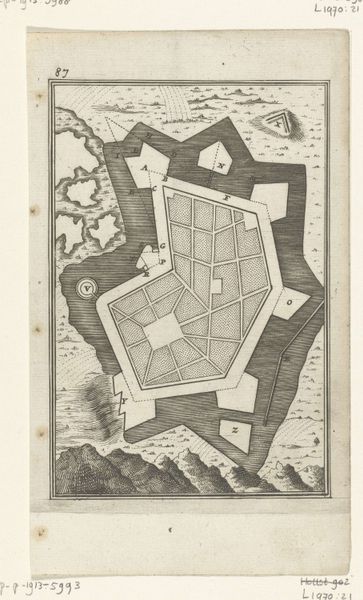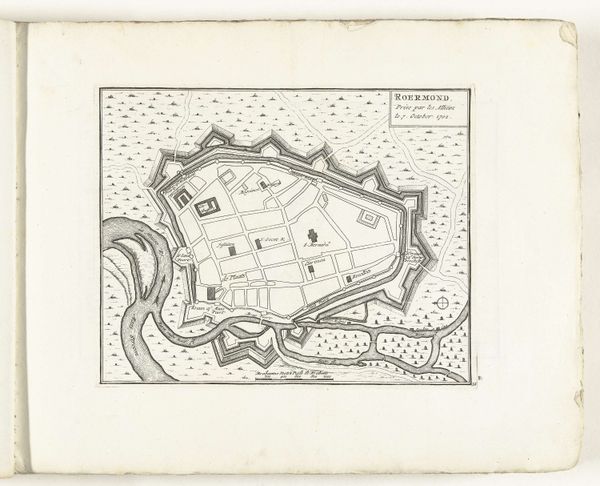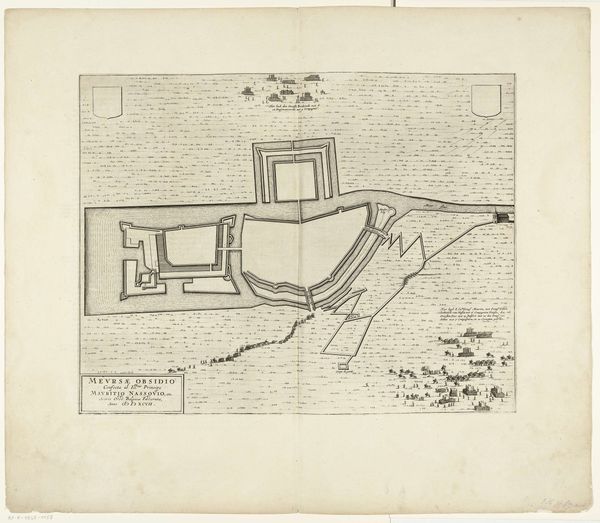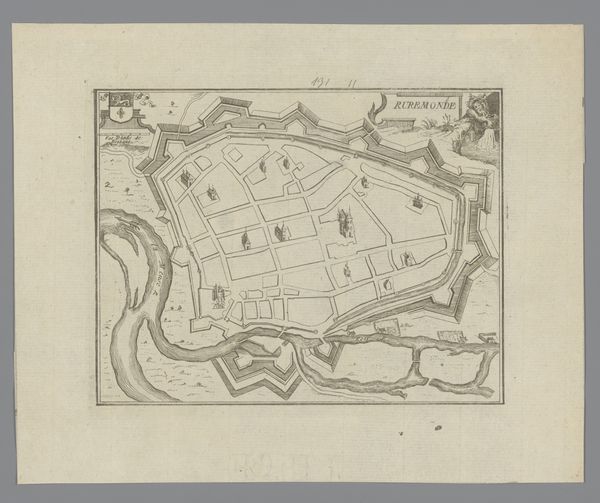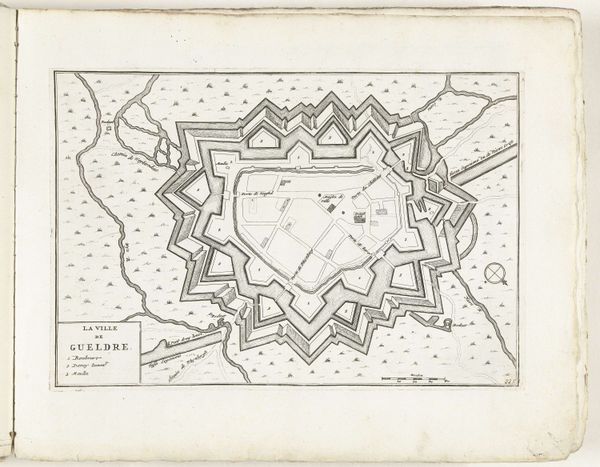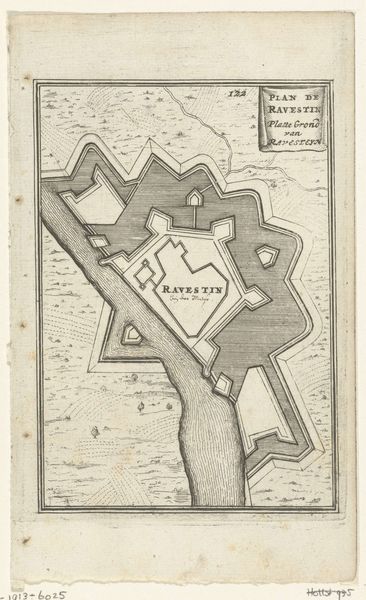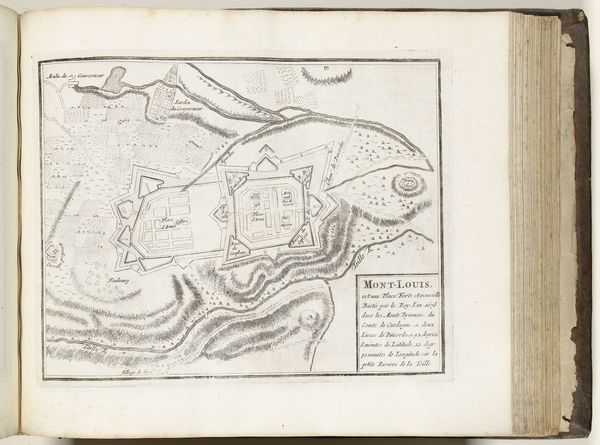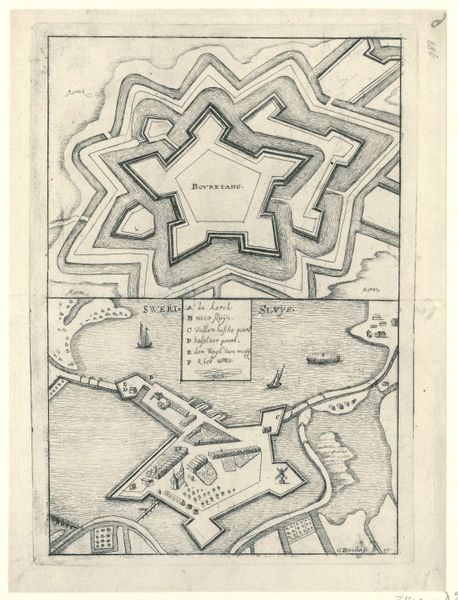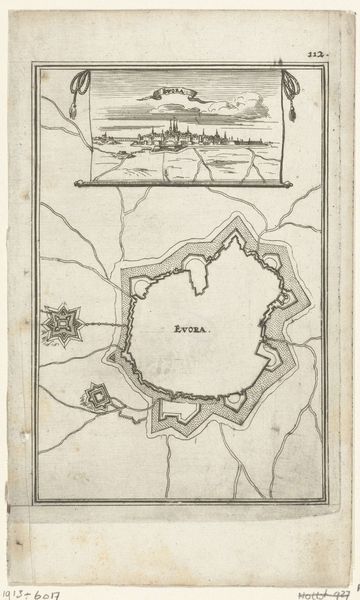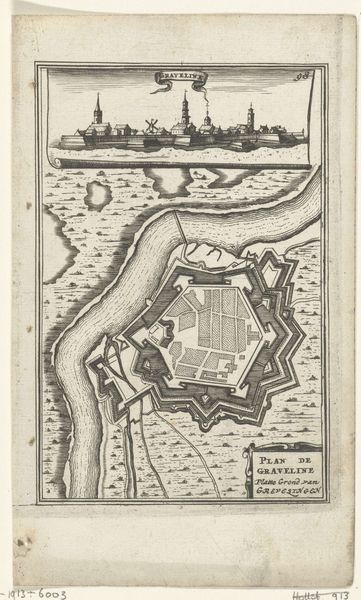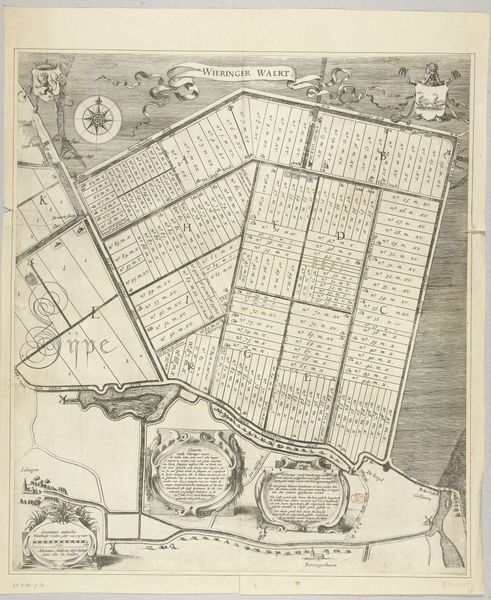
Illustratie voor 'Den Arbeid van Mars' van Allain Manesson Mallet 1672
0:00
0:00
romeyndehooghe
Rijksmuseum
print, engraving, architecture
# print
#
geometric
#
line
#
cityscape
#
engraving
#
architecture
Dimensions: height 186 mm, width 111 mm
Copyright: Rijks Museum: Open Domain
Curator: This engraving, dating from 1672, is titled 'Illustration for "The Labors of Mars" by Allain Manesson Mallet' and was created by Romeyn de Hooghe. The medium used was print. It's currently housed here at the Rijksmuseum. Editor: My initial impression is of geometric rigidity—it feels incredibly controlled. All these angles and the meticulous line work give it a very measured, almost scientific, quality. Curator: Indeed. The image itself depicts a fortified coastal cityscape. We must consider the historical context in which this piece was made—a period of intense European conflict and colonial expansion. Cityscapes like this one are as much about projecting power as they are about depicting reality. The geometric forms denote an interest in military defenses and reflect strategic planning within larger geopolitical struggles. Editor: Yes, and I'm immediately drawn to how De Hooghe uses line—crisp and uniform to construct a network of fortifications. Notice the repeating triangular and rectangular shapes. These aren't simply architectural forms; they're part of the piece's visual language and create rhythm and a sense of imposing strength. Curator: Consider how these fortifications protect, but simultaneously isolate and exclude. The walls not only ward off potential invaders but also serve as a stark reminder of social stratification and the power dynamics between the protected and the unprotected. These cityscapes often functioned as propaganda, reinforcing the authority of those in power and naturalizing societal hierarchies. Editor: You're right, it’s almost chillingly efficient. Even the ships on the water add to this idea of dominance, of a well-ordered and impregnable space. The engraving shows careful use of spatial relations to communicate stability and power. Curator: Exactly. The ‘labors of Mars’ it illustrates, referring to warfare, become entangled with questions of national identity, economic competition, and the ethics of territorial claim. We have to reflect on how artistic portrayals actively contributed to justifying acts of war and colonial exploitation. Editor: Looking at the detail of line and form really sharpens the feeling. A sense of foreboding lurks beneath the formal precision of the cityscape, offering a disturbing, though quiet, experience for the viewer. Curator: The beauty of such engravings lies not only in their craftsmanship but also in the way they encourage us to contemplate the social and political forces at play during their creation—and in what echoes may remain audible to the present day.
Comments
No comments
Be the first to comment and join the conversation on the ultimate creative platform.
